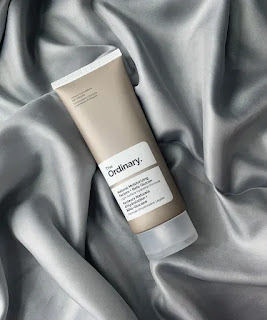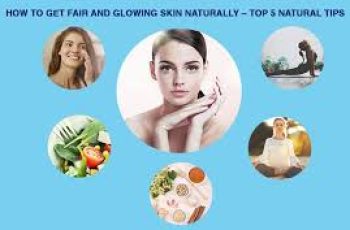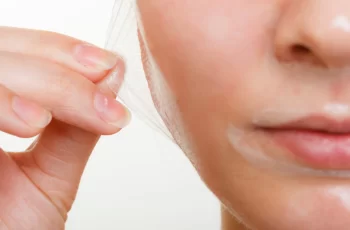How to Use Deodorant Cream for Best Results
Using a natural deodorant is a great way to keep your underarms fresh and sweat-free. However, this application may be completely foreign to many people as it is very different from simply spraying antiperspirant on your underarms.
As our Procoal Natural Deodorant Cream with Activated Charcoal is actually a balm, you will need to apply the product with your fingers when using it. This may feel strange at first, but it is the best way to achieve the best results.
Don’t forget to check out our previous blog on how to make sure your natural deodorant works best. Here are our 10 tips on how to use deodorant for the best results!
After showering, towel dry your underarms and apply the product immediately. Make sure your underarms are completely dry so that the deodorant can work best and not be diluted by the water.
Apply a pea-sized amount to each underarm in circular motions. The amount of product required will vary from person to person. It is worth starting with the above amount and experimenting until you find the amount that works for you personally. After using it for a while, you will find that the amount may change as your skin adjusts to the product and the results will get better over time!
Rub a pea-sized amount into the skin until it disappears and blends into the skin. Make sure you rub the product in until you can no longer see it.
When used correctly, it will not stain clothing, including black and white items. So always make sure the product is fully absorbed. Now you never have to worry about unsightly white spots again!
For those who don’t shave or wax their armpits, it’s best to make sure your armpits are free of dead skin – using a good body scrub/exfoliator regularly will help!
You can also reapply the product throughout the day, such as B. after a workout at the gym.
If you’ve just shaved or waxed your armpits, try not to use it right away. You may experience some skin sensitivity. Unless you like a slight stinging sensation, this is completely normal as the skin is very sensitive after shaving or waxing.
If you’ve been using the spray, it will take a few days to get used to the product. You’ll find that after 3-4 days of regular use, you’ll understand how much you should apply and how to apply it.
Do not store the product in an unusually warm place as the balm will melt slightly and become too liquid to use. This problem won’t occur at normal room temperature and conditions. It’s more likely to occur in areas that are in direct sunlight or near a radiator.
If you’ve exposed your product to heat/sunlight etc and it gets a bit creamy, there’s nothing to worry about. Simply pop it in the fridge for 15-20 minutes and it will return to its normal state.
So these are some tips for using our natural deodorant balm with Procoal activated charcoal. If this is your first time using a natural deodorant, it’s best to check out our previous blog. This describes the best ways to ensure your deodorant is working properly, such as: B. Removes toxins and chemicals from conventional deodorants and antiperspirants from your armpits. There are lots of other tips and advice too, so it’s definitely worth a look.
DQH Can I use salicylic acid first and then vitamin C?
It’s easy to create a skincare routine, but knowing how to use it is another thing entirely. In most cases, if you’re not getting the desired skin results, it could be due to the layering of conflicting ingredients. So, is it possible that salicylic acid and vitamin C are such ingredients? Or are these active ingredients the duo that’s been missing from your skincare routine? If you want answers, stick around because today we are going to explain the benefits of salicylic acid and vitamin C and how they can be used in your daily life.
What are the benefits of salicylic acid for skin?
Salicylic acid is one of the most commonly used beta hydroxy acids and is favored by many people with oily, acne-prone skin. This acid is derived from willow bark, and unlike its water-soluble relatives (called alpha-hydroxy acids), salicylic acid is oil-soluble, which means it can penetrate deeper into the lower layers of the skin. Once it reaches the lower layers, it can help unclog pores of excess sebum, dirt, bacteria, debris, and impurities. This results in clearer skin tones and greater definition.
Not only does salicylic acid benefit the underlying layers, but the outer surface of the skin benefits as well. When applied to the skin, salicylic acid removes the buildup of dead skin cells. This is accomplished by breaking the bonds that hold dead cells to the surface. Over time, this can cause the complexion to look dull and prone to acne, blackheads, and other blemishes.
If you’d like to learn more about salicylic acid and how it can improve your skin, check out this dedicated blog post from a beauty insider.
What are the benefits of vitamin C for skin?
Vitamin C is considered one of the most powerful antioxidants, which means it is very effective at fighting free radicals and preventing them from causing further skin damage. Examples of free radicals include pollution, central heating, UV rays and harsh climate. They attack proteins, fats and cell membranes as soon as they come into contact with the skin, causing signs of premature aging such as fine lines and wrinkles as well as hyperpigmentation, flaky patches of skin and loss of elasticity.
Many people usually prefer to use vitamin C in their morning routine as this ingredient gives the complexion a radiant glow. You’ll also find that vitamin C can target areas of hyperpigmentation, plumping the skin and reducing the appearance of fine lines and wrinkles.
The thing about vitamin C is that there are a lot of outdated studies going back to the 1950s that describe vitamin C as an unstable skin component. Thanks to improvements in modern technology, this is no longer the case as all products now contain a stable form of vitamin C.
Visit The Beauty Insider to learn more about vitamin C. So please check out our blog post.
Can I use salicylic acid first and then vitamin C?
Yes, you absolutely can. In fact, it’s thought that using salicylic acid before using vitamin C ensures it penetrates faster and works faster.
This is an efficient way to utilize two power sources, and the reason has to do with pH. For example, the skin’s natural pH is about 4.7, making it slightly acidic. Salicylic acid and vitamin C are also both acidic, and you’ll find that vitamin C is absorbed quickly into the skin. Therefore, using salicylic acid beforehand can increase the acidity of the skin and allow vitamin C to penetrate into the skin faster.
While this is considered an effective way to combine two powerful ingredients, you need to be aware of your skin type and how it reacts to certain active ingredients. Even people with perfect, normal skin can experience skin sensitivity and irritation. Therefore, always consult a doctor or dermatologist before using any new products on your skin.
It’s also important to follow skin application rules. In this case, you need to use the product correctly to ensure you get the best results for your skin. If you’re not sure what I mean, the basic rule for skin is to start with the thinnest consistency and work your way up to the thickest consistency. This prevents a barrier from forming on the surface, preventing other active ingredients from penetrating the skin.
Can I use salicylic acid at night and vitamin C in the morning?
Yes, absolutely, this is considered the most effective way to get returns without any adverse side effects. This is because there is enough time between applications to ensure that the skin’s pH levels return to balance.
You’ll also find that Vitamin C is rich in antioxidants and is perfect for use in the morning to ensure your skin is protected and looking its healthiest. Due to the small size of salicylic acid molecules, it is an acid that is able to reach the deepest parts of the skin. While this is effective at keeping skin clear, it also increases the risk of irritation and photosensitivity. Therefore, many people prefer to use powerful BHAs in their evening routine without exposure to UV rays, pollution, or harsh weather.
Warning: If you avoid using sunscreen every day, none of these ingredients will do what your skin needs. The combination of chemical peels and powerful ingredients increases the risk of further damage to the skin’s surface. Use SPF 50 every day to keep your skin protected and your lipid barrier healthy, even on cloudy days, keeping your skin in top condition.



